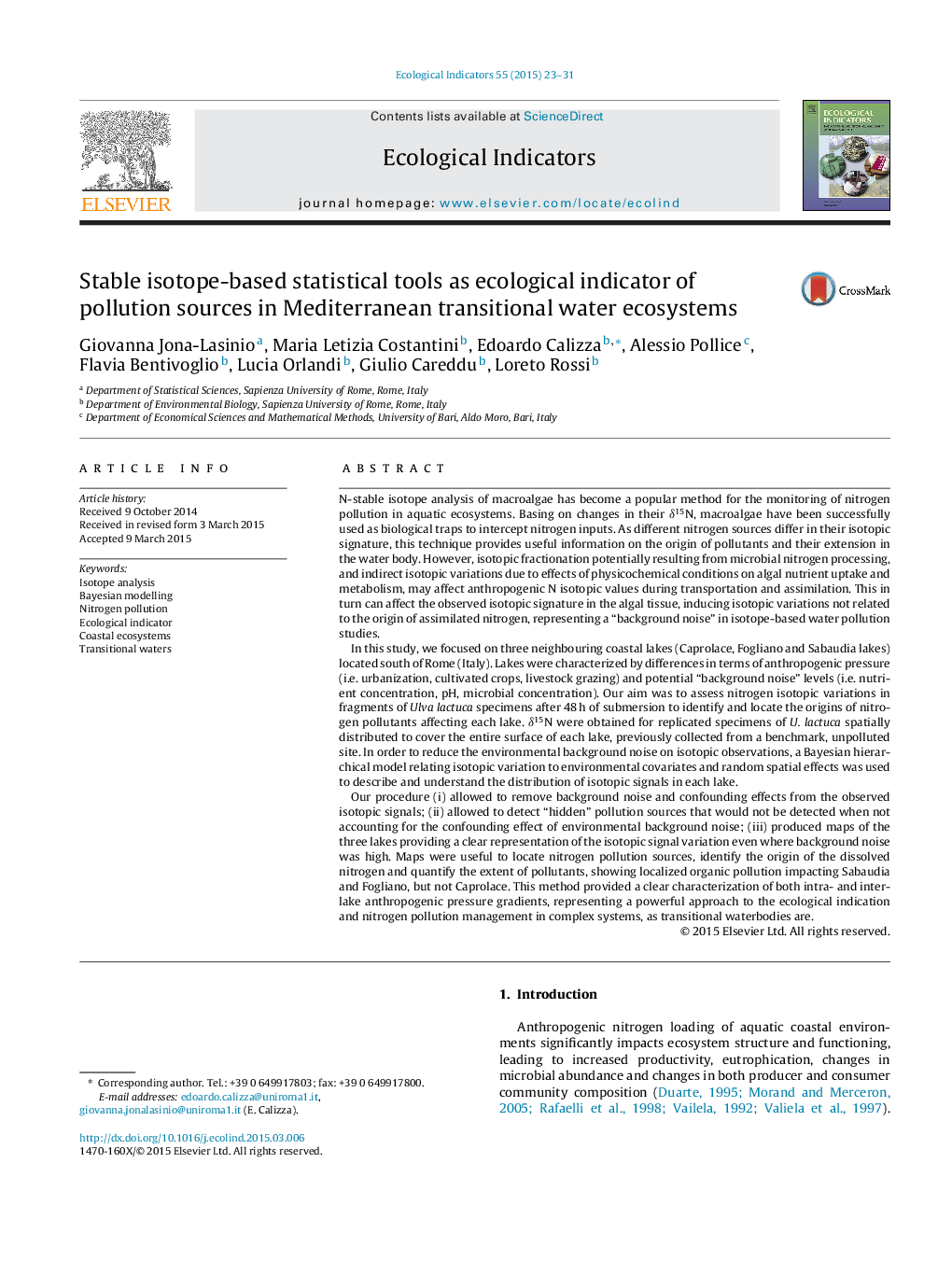| Article ID | Journal | Published Year | Pages | File Type |
|---|---|---|---|---|
| 6294376 | Ecological Indicators | 2015 | 9 Pages |
â¢Isotopic variation in algae was assessed to detect pollution sources in coastal lakes.â¢We applied modelling to eliminate confounding factors on observed isotopic values.â¢Our protocol allows us to compare ecosystems differing in biotic and abiotic conditions.â¢Pollution hotspots were identified and their statistical significance quantified.
N-stable isotope analysis of macroalgae has become a popular method for the monitoring of nitrogen pollution in aquatic ecosystems. Basing on changes in their δ15N, macroalgae have been successfully used as biological traps to intercept nitrogen inputs. As different nitrogen sources differ in their isotopic signature, this technique provides useful information on the origin of pollutants and their extension in the water body. However, isotopic fractionation potentially resulting from microbial nitrogen processing, and indirect isotopic variations due to effects of physicochemical conditions on algal nutrient uptake and metabolism, may affect anthropogenic N isotopic values during transportation and assimilation. This in turn can affect the observed isotopic signature in the algal tissue, inducing isotopic variations not related to the origin of assimilated nitrogen, representing a “background noise” in isotope-based water pollution studies.In this study, we focused on three neighbouring coastal lakes (Caprolace, Fogliano and Sabaudia lakes) located south of Rome (Italy). Lakes were characterized by differences in terms of anthropogenic pressure (i.e. urbanization, cultivated crops, livestock grazing) and potential “background noise” levels (i.e. nutrient concentration, pH, microbial concentration). Our aim was to assess nitrogen isotopic variations in fragments of Ulva lactuca specimens after 48 h of submersion to identify and locate the origins of nitrogen pollutants affecting each lake. δ15N were obtained for replicated specimens of U. lactuca spatially distributed to cover the entire surface of each lake, previously collected from a benchmark, unpolluted site. In order to reduce the environmental background noise on isotopic observations, a Bayesian hierarchical model relating isotopic variation to environmental covariates and random spatial effects was used to describe and understand the distribution of isotopic signals in each lake.Our procedure (i) allowed to remove background noise and confounding effects from the observed isotopic signals; (ii) allowed to detect “hidden” pollution sources that would not be detected when not accounting for the confounding effect of environmental background noise; (iii) produced maps of the three lakes providing a clear representation of the isotopic signal variation even where background noise was high. Maps were useful to locate nitrogen pollution sources, identify the origin of the dissolved nitrogen and quantify the extent of pollutants, showing localized organic pollution impacting Sabaudia and Fogliano, but not Caprolace. This method provided a clear characterization of both intra- and inter-lake anthropogenic pressure gradients, representing a powerful approach to the ecological indication and nitrogen pollution management in complex systems, as transitional waterbodies are.
